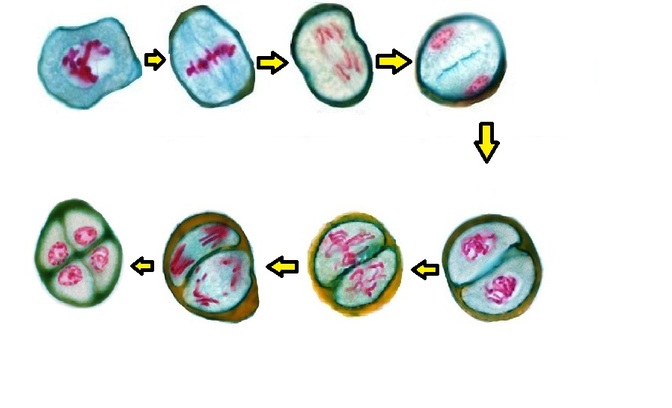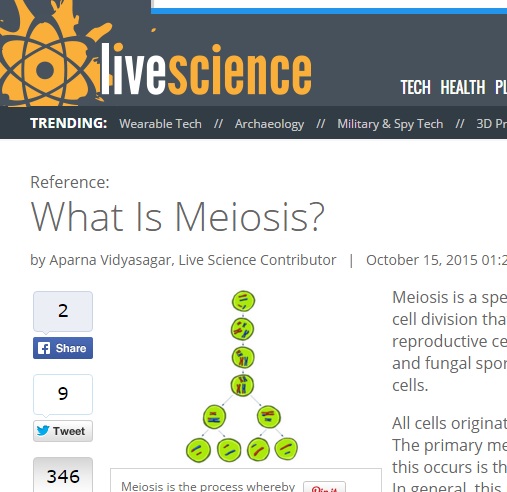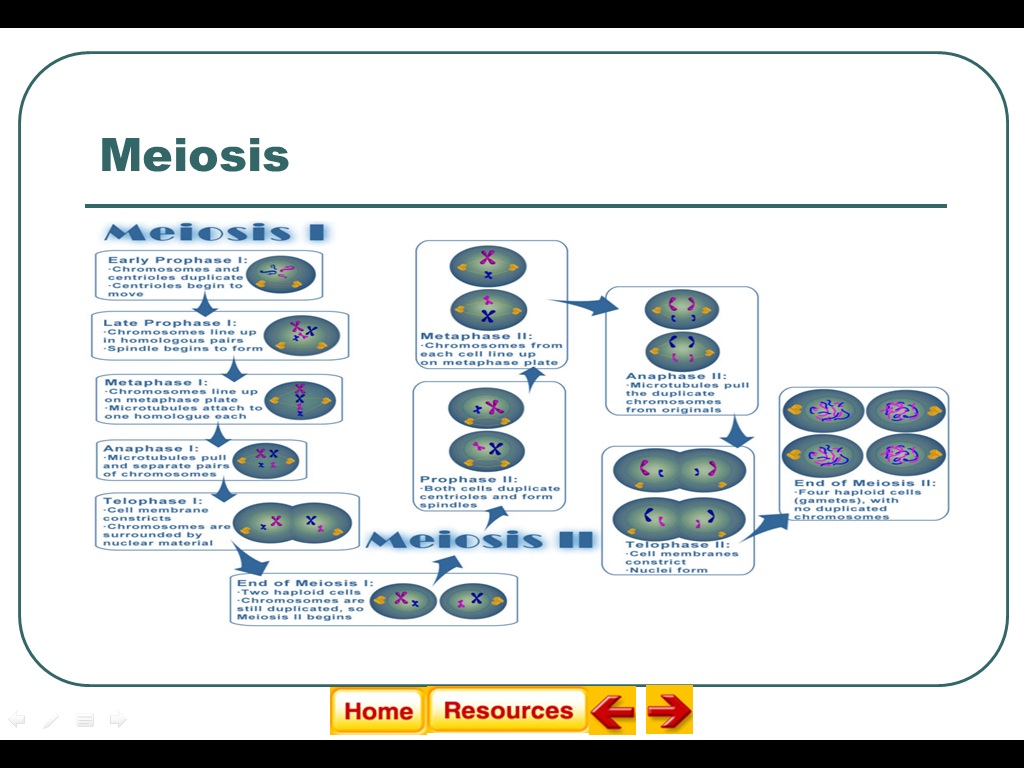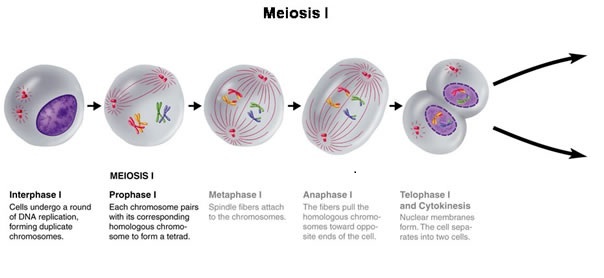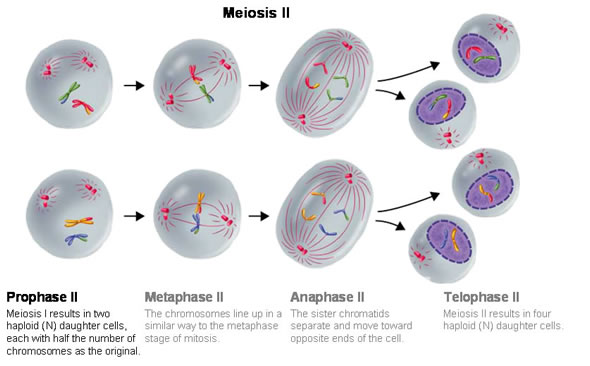What are the stages of Meiosis?
Meiosis results in the formation of four haploid cells. Each haploid cell has half the number of chromosomes found in the original cell. Meiosis has two parts: meiosis I and meiosis II.
As you continue to read through this page, you will find several different media to help you learn about meiosis.
As you continue to read through this page, you will find several different media to help you learn about meiosis.
| meiosis.pdf | |
| File Size: | 311 kb |
| File Type: | |
| meiosis_notes.pdf | |
| File Size: | 344 kb |
| File Type: | |
Meiosis I
Remember that homologous chromosomes have the same genes, but they are NOT exact copies of each other. Before meiosis I begins, each chromosome is duplicated, or copied. Each half of the duplicated chromosome is called a chromatid (KROH-muh-tid). Chromatids are connected to each other by centromeres (SEN-truh-mirz). Duplicated chromosomes are drawn in an X shape. Each side of the X represents a chromatid, and the point where they touch is the centromere.
During meiosis I, pairs of homologous chromosomes and sex chromosomes split apart into two new cells. These cells each have one-half of the chromosome pairs and their duplicate chromatids. The steps of meisosi I are shown below.
During meiosis I, pairs of homologous chromosomes and sex chromosomes split apart into two new cells. These cells each have one-half of the chromosome pairs and their duplicate chromatids. The steps of meisosi I are shown below.
MEIOSIS II
Meiosis II involves both of the new cells formed during meiosis I. The chromosomes of these cells are not copied before meiosis II begins. Both of the cells divide during meiosis II. The steps of meiosis II are shown above.
Meiosis II results in four haploid sex cell. In male oganisms, these cdlls develop into sperm cells. In female organisms, these cells become eggs (ovum). In females of some species, three of the cells are broken down and only one haploid cell becomes an egg (ovum).
Meiosis II results in four haploid sex cell. In male oganisms, these cdlls develop into sperm cells. In female organisms, these cells become eggs (ovum). In females of some species, three of the cells are broken down and only one haploid cell becomes an egg (ovum).
Here is another example of Meiosis I anD II
